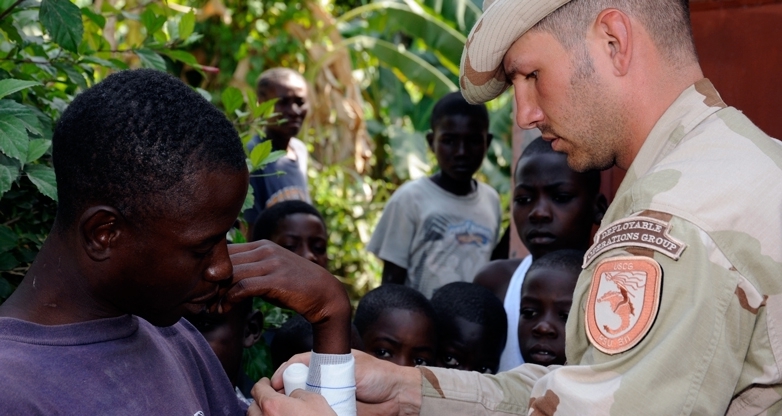The Coast Guard Reserve was established by the passage of the Coast Guard reserve and Auxiliary Act of February 19, 1941. That act also established the Coast Guard Auxiliary under its present name (the Auxiliary had originally been called the Coast Guard Reserve). The new Coast Guard reserve was modeled after the Naval Reserve as a military component, composed of two broad classifications: Regular Reservists and Temporary Reservists. Regular Reservists and Temporary Reservists. Regular Reserve members served on active duty during World War II "for the duration," while Temporary Reserve members consisted of volunteers and former Auxiliary members whose paid and unpaid services were still needed in a military capacity for coastal patrols and port security work.
On November 23, 1942, Congress enacted Public Law 773 establishing the Women Reserve as a branch of the Coast Guard. Members of this branch became known as SPARs, an acronym drawn from the Service motto, Semper Paratus, Always Ready. More than 92% of the 214,000 personnel who served in the Coast Guard during World War II were Reservists, with an additional 125,000 personnel serving in the Temporary Reserve. They served in all Coast Guard mission areas.
At the conclusion of World War II, most Reservists were released to inactive duty or discharged. The Women’s Reserve was terminated in July 1947 but reestablished in August 1949. By 1950, funds were earmarked by Congress for the establishment of a paid drilling Reserve in support of the Coast Guard&, recently expanded port security responsibilities. The first organized Coast Guard Reserve unit was formed in Boston in October 1950, setting the framework of today’s Coast Guard Reserve. The Selected Reserve reached a peak post-WWII strength of 17,815 in 1969, during the Vietnam Conflict.
In the Spring of 1973, the Reserve exercised its first involuntary recall to support flood response operations in the Midwest. Some 134 Reservists were recalled. Between then and 1990, only one other involuntary recall was invoked—for the Mariel Boat Lift exodus from Cuba in 1980. The 1980s also included augmentation of the Active Component to enforce Security Zones for space shuttle operations in Florida, logging over 5900 person-days from 1981 to date. The decade finished with major Reserve augmentation for the massive cleanup operations in Alaska following the Exxon Valdez oil spill where 65% of personnel used in that operation came from the Reserve.
The 1990s saw a growing demand for the Coast Guard’s unique domestic recall authority under 14 USC 712. The Reserve has provided personnel to the Active Component to support 12 hurricane and six major flood operations, including Hurricane Floyd in 1999. Late that year, the Coast Guard also received authorization to recall reservists to respond to possible Y2K-related contingencies, but did not do so. Reservists volunteered for the 1999 search-and-recovery efforts following the crashes of a light plane piloted by John F. Kennedy Jr. and Egypt Air 990. During 2000, approximately 1,000 reservists served on active duty in support of Operation Sail.
In the Coast Guard’s national defense role, 1,650 reservists, over 15% of the selected reserve, participated in operations desert shield/storm. reserve-staffed port security units also participated with the joint community in operation uphold democracy in Haiti and they continue to participate in joint military exercises worldwide.
One unique and highly successful Reserve-sponsored program, Sea Partners, has earned high marks around the country since its inception in 1994. Its primary objective has been to educate communities at large in developing awareness of marine pollution issues and improving compliance with marine environmental protection laws and regulations. Over 300 Coast Guard Reservists have participated in the Sea Partners campaign, in which teams of Reservists are assigned to each of the 47 USCG Marine Safety Offices across the country. New members are recruited through on-the-job or formal training at Coast Guard Marine Safety Offices. Since June 1994, Sea Partners teams have reached over 2 million individuals in personal contacts and many thousands more through print media, radio and television coverage. They have distributed over a million pieces of printed literature on various marine pollution topics. The popular Officer Snook campaign has educated hundreds of thousands of children on marine pollution prevention. Through the Sea Partners program, Reservists coordinated numerous beach and shore cleanups around the country in FY 00. Working relationships have been established with community and local government groups, such as the North Carolina Big Sweep, the Dade County, FL Dept. Of Environmental Resource Management and the Pacific Oil Spill Prevention Education Team.
With most Coast Guard Reservists assigned to the same active duty command that they would augment upon mobilization, they are better-prepared both administratively and operationally to report, in most cases, within 24 hours of call-up. The exceptions to this are the Coast Guard Port Security Units, which are nearly 100-percent reserve staffed, and Naval Reserve Harbor Defense Command Units, which have Coast Guard Reservists assigned. Under the Title 14 recall authority, the Secretary of Transportation may involuntarily recall Reservists to serve in domestic emergencies, in which case the local district commander determines which specialties and number of personnel to recall.
In Fiscal Year 2000, Coast Guard Reservists contributed nearly 316,000 days of duty in all Coast Guard mission areas. In February 1998, the administration, in response to heightened tensions in the Middle East, invoked a Presidential Selected Reserve Callup (PSRC). Five hundred Reservists from all the military services were placed on standby status, including 130 Coast Guard Reservists assigned to PSU 305 at Ft. Eustis, VA. Coast Guard Reservists represented 26% of the entire authorized PSRC total. In August 1999, the commander of the Seventh Coast Guard District and the commander of the Coast Guard Atlantic Area requested and obtained authority for the involuntary call-up of 350 reservists in anticipation of damage and floods caused by Hurricane Floyd. Reservists from outside the projected area of impact were the first to be identified. Again, Reservists answered the call which allowed the Coast Guard to fulfill service needs.
The Reserve Component continues strengthening its ties with the other members of the "Team Coast Guard." The 1997 Coast Guard Reserve Roles & Missions Study has validated the need for a Selected Reserve strength of over 12,000 to meet current national defense tasking, operational contingency requirements and certain "mission critical" functions. The need for Active Duty for Special Work (both ADSW-RC and ADSW-AC) to support Coast Guard domestic surge operations will continue. In addition, Reservists are increasingly answering the call to fill Active Component shortfalls in day-to-day operations through performance of both ADSW and Extended Active Duty as the Coast Guard strives to meet its motto, Semper Paratus, Always Ready
Involuntary Recalls to Active Duty
The Coast Guard has recalled reservists for two defense contingencies and ten non-defense emergencies since 1973. Between 1973 and 1990 Coast Guard reservists were involuntarily recalled on just three occasions. Hurricane Andrew's devastation of South Florida in September 1992 changed all that. It is now routine for districts to request involuntary recall authority whenever a hurricane threatens the coastline of the U.S. or its territories. Authority to recall reservists was granted by the Secretary of Transportation six times during FY 1995. A total of 263 reservists were actually recalled to augment active duty forces for these emergencies. Authority was granted once in FY 1996 for Hurricane Opal, authorizing the recall of 275 reservists.
More Coast Guard Reserve historical information can be found with the U.S. Coast Guard Historian's Office.

1940s In its inception 75 years ago, the Coast Guard Reserve bore little resemblance to the organization that today augments its Active Duty counterpart in nearly all mission areas. To understand the origins of today’s Coast Guard Reserve, it is necessary to trace the history of the Coast Guard Auxiliary, since both organizations were one and the same between the years of 1939 and 1941.
The original Coast Guard Reserve Act was signed into law June 23, 1939, thus creating the Coast Guard Reserve. It was then a non-military service comprised of volunteer boat owners and yachtsmen tasked with promoting seamanship and boating safety — in essence, they were tasked with performing the missions of today’s Auxiliary.
With passage of the Auxiliary and Reserve Act of 1941, both organizations were given separate identities and have operated under basically the same guidelines since. This Act, signed on Feb. 19, is today recognized as the event that marks the birthday of the Coast Guard Reserve. It designated the Reserve as a military branch of the Active service, while the civilian volunteers, formerly referred to as the Coast Guard Reserve, became the Auxiliary. The Auxiliary recognizes the date of the original Reserve Act, signed on June 23, 1939, as their birthday.
The Coast Guard began operations under the Department of the Navy on Nov. 1, 1941. For the duration of the war, all personnel enlistments and commissions in the Reserve were for the duration of the war plus six months.

The regular Coast Guard consisted of Academy graduates and personnel who had enlisted prior to the outbreak of hostilities. The full-time, Active Duty “regular reservists” served side by side with their regular Coast Guard shipmates in all phases of wartime operations, from manning Coast Guard and Navy ships, to acting as coxswains on invasion landing craft. Their service and heroics were present from Iwo Jima and Guam, to Normandy and North Africa.
By the end of the war, there were 6,800 Reserve Officers, 300 Reserve Warrant Officers, and over 135,200 Reserve enlisted. These totals outnumbered the regular Coast Guard by over five to one. Temporary Reservists To release the great numbers of regulars and regular reservists needed for sea and combat duty, the Auxiliary and Reserve Act was once again amended in June 1942. This amendment activated the “Temporary Reserve.
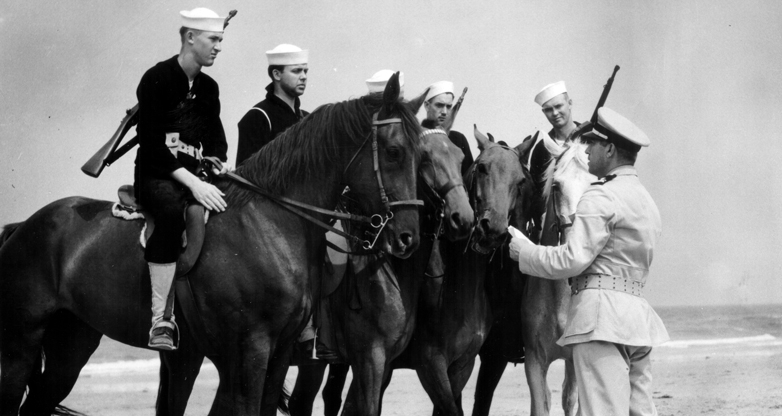
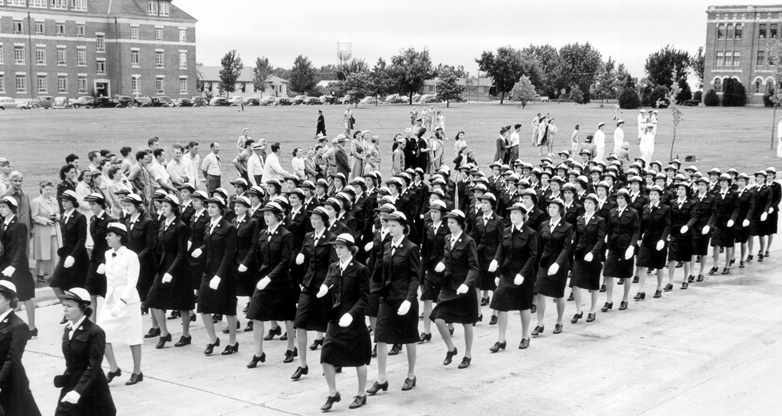


Upon the massive demobilization at the end of World War II, all the regular and Temporary Reservists returned to their civilian status. Though some reservists continued to hold informal meetings, no organized Coast Guard Reserve program existed, nor were there congressional appropriations for maintaining or training a Coast Guard Reserve force. Though the other services were receiving money to maintain Reserve components, the Coast Guard Reserve was an uncertain entity for several years following war’s end.
However, many who had served in the Temporary Reserve were enthusiastic about continuing their association with the Coast Guard. They cited idle ships, closed stations, and the long hours and lack of leave of the regulars, all due to a lack of manpower, as evidence that an organized Coast Guard Reserve was necessary. Even without “official” organization, many officers were maintained on inactive status as their names were on file at Headquarters and they could be reached if necessary. Headquarters sought to provide both training for those officers still on the rolls and create an enlisted force. Together, they would serve as the nucleus in fulfilling the Coast Guard’s role in the event of another national emergency. In July 1947, the authority to maintain the Women’s Reserve (SPARs) was terminated, due to a repeal of wartime legislation. Furthermore, although the funds requested by the Coast Guard to set up a Reserve were less than one percent of those requested by the other four services combined, they were continually turned down.
In 1948, however, two motions set the stage for the reemergence of an official Coast Guard Reserve. The first was Public Law 810, approved July 29, 1948, which provided that if a reservist’s active and inactive duty in the Reserve totaled 20 years, and the reservist spent a given amount of each year in training, then at age 60 the reservist would be eligible to receive retirement pay. A few months later, on Oct. 15, 1948, President Truman issued Executive Order 10007, which ordered all five services to take strides to stimulate, enlarge, and train their respective Reserve components. In March of 1949, the Navy assigned the Coast Guard certain responsibilities for mobilization and national emergencies. In the wake of Executive Order 10007, the Coast Guard called a small group of Reserve officers to active duty at Headquarters, and one officer was installed in each district as the Director of Reserve. Recruiting and enlistment procedures began, the districts set up files, and began the necessary administrative work. First attempts were made at organized Reserve training, and in some cities, reservists were formed into active training units. Those reservists living away from metropolitan centers were encouraged to enroll in correspondence courses and attend the Reserve training of other armed services. In November of 1949, the Women’s Reserve was reinstated.

Finally, in 1950, the needed money was received when one million dollars of the Coast Guard budget was designated for Reserve training. Two years hence, the Armed Forces Reserve Act of 1952 placed increased emphasis on the Reserve, by defining their missions, numbers, and composition. The first Chief of the Reserve Division, under the Office of Personnel at Headquarters, was CAPT John L. Steinmetz from 1950-52. In November of 1953, the first issue of The Coast Guard Reservist was published with the purpose stated as “the dissemination of up-to-date information of interest to all Coast Guard Reservists, on active and inactive duty.” Throughout the 1950s, the Coast Guard Reserve program grew rapidly. In October 1950, the first Organized Reserve Training Unit Port Security (ORTUPS) was established in Boston. Also, Coast Guard Reservists were active in the Korean War, with 675 volunteering for Active Duty in the first year of the conflict alone. The Reserve Forces Act of 1955 established the National Ready Reserve Manpower Pool, to fulfill the needs of the armed forces.
The Coast Guard Ready Reserve ceiling was set at 39,600. The Reserve Forces Act of 1955 also authorized the “2 x 6” and “6 x 8” Reserve enlistment programs. The “2 x 6” recruited personnel for a six-year commitment, with the first two years served on Active Duty. The “6 x 8” program called for an eight-year commitment with the first six months on Active Duty. When not on Active Duty, reservists drilled intermittently and performed ADT for short stretches. From 1951 until the end of the decade, the size of the Selected Reserve rose from 2,257 to 11,498. The first Reserve Program Administrator designation board was held in the late 1950s.

Throughout the 1960s, maximizing the capability for quality mobilization-related training was a central focus. New units were developed, small boats were acquired, and cutters were operated for the express purpose of Reserve training. In 1961, the “Reserve Division” at Headquarters, which had previously been within the Office of Personnel, was shifted to the Chief of Staff ’s Office, under the direction of an Assistant Chief of Staff for the Reserve. He was charged with forming policies, and advising the Chief of Staff, (then RADM James A. Alger, Jr.), about Reserve affairs, who then in turn reported to the Commandant.
Also in 1961, the annual RADM Russell R. Waesche Award was instituted and presented for the first time. The award, named for the Coast Guard’s wartime Commandant, was developed to recognize outstanding Reserve accomplishments within a Coast Guard District. The 7th District won this award the first year, and this tradition continues today. Past winners are honored on a plaque in the Reserve & Training Directorate at Headquarters. Since the early 1950s, Reserve appropriations had grown to $16 million and there were 46 authorized ORTUPS. The Coast Guard Reserve had 139 port security units and 63 vessel augmentation units.
The growth of the Coast Guard Reserve resulted in the creation of the Office of Reserve in 1963. RADM Louis M. Thayer was the first Flag officer in charge of the newly created Office of Reserve. In 1964, the SPAR program was revitalized, and more women were sent to yeoman and storekeeper training. By this time, there were 60 Reserve Program Administrators whose specialty was in overseeing the operation of the growing Coast Guard Reserve.
During the Vietnam conflict, nearly 8,000 Coast Guard personnel, both Active and Reserve, served in Southeast Asia. In 1967, the Coast Guard transferred from the Department of Treasury to the newly created Department of Transportation.

The drill strength of the Selected Reserve peaked at 18,378 in 1965, and until 1969 strength remained at between 17,000 and 18,000. As the Vietnam conflict wound down between 1970 and 1975, drill strength declined to 11,500. This was due to an administrative proposal in 1970 to phase out the Selected Reserve. However, because port safety and security was an important mission specialty of the Coast Guard Reserve, and one the Navy was not prepared to assume, the Selected Reserve was retained, with the recommendation that a peacetime mission be developed.
This led to the birth of augmentation in 1971. Since most of the Coast Guard’s missions were applicable both during peace and wartime, Reserve training was diverted to support those missions, while at the same time keeping mobilization duties in mind. The 1972 National Coast Guard Reserve Policy Board defined augmentation as “any Reserve activity that supports effective training for mobilization while meeting a stated need of an element of the regular Coast Guard.” This shift from mainly classroom training to hands-on operational activity began a renewal of purpose for the Reserve, and led to the “One Coast Guard” concept: regulars and reservists working together to attain Coast Guard mission goals.

In October of 1972, the Coast Guard Reserve received a new, and unique mission when Congress authorized the involuntary call up of Coast Guard Reservists for peacetime assistance when needed, such as after natural disaster or shipping accidents. Since that time, the Coast Guard Reserve has responded to numerous incidents, including Mississippi, Ohio and Red River floods, the Mariel Boatlift in 1980, hurricanes, various vessel explosions, sinkings and airplane crashes. In 1972, the 9th District’s Summerstock program began. Reservists from around the nation were summoned to help fill billets at Great Lakes small boat stations. This tradition also continues today. In February 1973, women were included in an Officer Candidate School class for the first time, and in December 1973, the Women’s Reserve was finally dismantled, with all SPARs becoming members of the Coast Guard Reserve. The “Bender Blues,” named for ADM Chester Bender, became the new uniform of the Coast Guard and thus, Coast Guard Reserve, in 1974.
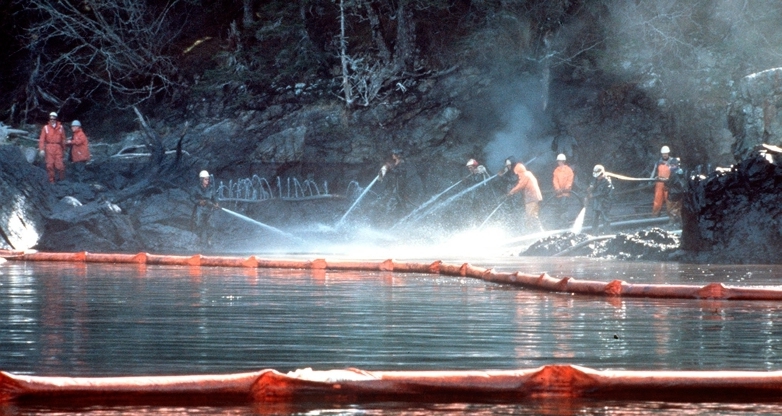
The 1980s brought more changes and new challenges to the Coast Guard Reserve program. The year 1984 saw the formation of the Office of Readiness and Reserve at Headquarters. This combined the former Office of Reserve with readiness divisions, already existing within the Office of Operations. Under the direction of a dual-hatted Flag officer, the first being RADM Joseph McDonough, the new office emphasized the importance of the Coast Guard Reserve’s role in defense readiness, and the necessity of the link between the Reserve program and defense, contingency, and mobilization planning.
Other changes affecting the Coast Guard Reserve during the 1980s were the first Reserve Officer Candidate Indoctrination classes convening at RTC Yorktown (1984), a district realignment that reduced the number of districts from 12 to 10, the commencement of providing port security for space shuttle operations in 1981 while the deployable port security unit program was initiated in 1984.

In 1983, the ROA Outstanding Junior Officer Award was established with LCDR Richard W. Schneider the first recipient (Schneider eventually became a Reserve Flag officer). This award continues up to the present. In 1984, BM2 Lisa B. Milone was named the first national NERA Outstanding Enlisted Coast Guard Reservist. This award changed names in 1995 to the CG Enlisted Person of the Year (EPOY) and also continues. In 1989, the Coast Guard Reserve also provided valuable support following the Exxon Valdez oil spill, Hurricane Hugo and the San Francisco earthquake.
In 1990, as the Coast Guard celebrated its Bicentennial, approximately 1,650 Coast Guard Reservists served here in the United States and in the Middle East in support of Operations Desert Shield and Desert Storm (Persian Gulf War). PSU 301, Buffalo; PSU 302, Cleveland; and PSU 303, Milwaukee, deployed during the fall of 1990. Replacement units were trained at Camp Blanding, Fla. with two of them eventually deploying. PSU 301 and 302 were called upon again in 1994 for Operation Uphold Democracy in Haiti, while the Harbor Defense Commands were tested for the first time. In February 1998, PSU 305 was recalled when activities in the Middle East grew tense once again. The unit did not deploy, but remained on alert.
The current Coast Guard Reserve emblem was developed in 1991 for the Reserve’s 50th birthday celebration. That year, the Coast Guard Reserve celebrated across the nation with many special events, including St. Augustine, Fl, considered the birthplace of the Reserve. In November 1992, the Coast Guard SPARs held a 50th reunion in Washington, D.C. with hundreds of SPARs attending and then-94-year-old CAPT Dorothy Stratton the guest speaker.

Reservists were called in to help following Hurricanes Andrew and Iniki, and Typhoon Omar in 1992, the Mississippi River floods of 1993, Red River and Ohio River floods in 1997, the crashes of TWA Flight 800, John F. Kennedy, Jr.’s plane, and again for the crash of Alaskan Air 261 last year. Reservists were recalled following several oil spills in January 1994 including San Juan, P.R., St. Louis, Mo. and Longview, Wash. In June 1994, reservists began Sea Partners training, a marine environmental pollution education program, which continues today. In August/September 1994, reservists assisted the Coast Guard pick up more than 31,000 Cuban migrants in the Straits of Florida.
Following a downsizing of the Reserve program from 12,000 SELRES to 8,000 in 1993-94, a major Reserve program shift occurred in August 1994: Integration. Sometimes referred to as Team Coast Guard, Integration basically disbanded the old Reserve unit structure and placed reservists under the command of Active Duty units.
In 1995, the port security unit program reorganized from their strictly D9 location. By the late 1990s, PSUs were commissioned in six districts around the nation with the unit number corresponding with the district number: PSU 305, Fort Eustis, Va.; PSU 307, St. Petersburg, Fla.; PSU 308, Gulfport, Miss; PSU 309, 313, Tacoma, Wash.
The first Reserve Chief Petty Officers Academy Course graduated in December 1993 at TRACEN Petaluma, and has now graduated 10 classes. Reserve Enlisted Basic Indoctrination (REBI) moved from Petaluma to Cape May and following a short hiatus, started up again in 1994. Reserve Officer Candidate Indoctrination (ROCI) and Officer Candidate School (OCS) moved from Yorktown to New London when the Leadership Development Center at the CG Academy was formed in 1998.
In 1996, the Office of Readiness & Reserve was reorganized once again, this time as the Directorate of Reserve and Training. The district-level offices of Reserve (r) were disbanded and Integrated Support Commands Force Optimization and Training Division (pf) were put in their place. In 1996, the 2nd Coast Guard District became part of the 8th District and the closing of Governors Island occurred in 1997. On Oct. 5, 1999, Congress passed Public Law 106-695 establishing the Office of the Coast Guard Reserve and the flag-level Director of the Coast Guard Reserve.
Other historical notes of the 1990s include formation of the position of the Reserve Force Master Chief (MCPO Forrest Croom was first to serve, 1991-94), the Reserve Administration & Training Manual (RATMAN) was reorganized into the Reserve Policy Manual (1996), the formation of the MST rating (1999) and dissolution of the DP rating.
In the mid-1990s, the Internet took off and the Reserve Web site went on-line in 1995, with The Reservist magazine following shortly thereafter in April 1996. On March 24, 1999, the first Director of the SPARs, CAPT Stratton, turned 100 years old! Hundreds of well-wishers from across the nation (and even the world) sent her greetings to her home in West Lafayette, Ind. Later that year, the Coast Guard Reserve named its first female Flag officer: RADM Mary P. O’Donnell of Danville, California.




The year 2000 would see Coast Guard reservists deploying to the Middle East in response to a terrorist attack on the USS COLE in the Port of Aden, Yemen, on October 12, 2000. The attack killed 17 sailors and injured thirty-nine others. Two months later, on December 13, thirty-seven members of PSU 309 deployed to provide ship borne and waterside security for high valued vessels in the Middle East region. This would be a precursor of things to come.
The terrorist attacks of September 11, 2001 highlighted the value of the Coast Guard Reserve. As noted by then Director of Reserve Rear Adm. R. Dennis Sirois, “When the nation was confronted by the immediate need for securing our domestic port infrastructure, the Coast Guard was there. Exercising existing plans and the unique authorities granted the Secretary of Transportation, the Coast Guard Reserve surged immediately on 11 September, with up to 1,100 members on duty by 14 September.”
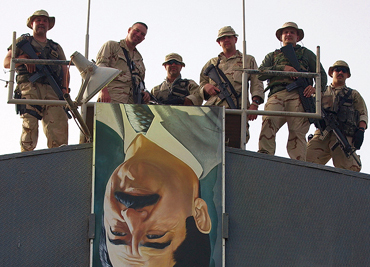
Among those reservist recalled for protect the homeland were members of PSU 305 and PSU 307, which were sent to the port cities of New York and Boston respectively. Hundreds of other reservists were deployed to protect dozens of critical ports along the country’s East, West and Gulf Coasts.
In addition to domestic port security, reservist serving at PSUs began a near decade long mission of land side and water side security in the Middle East as well providing water side security at Naval Base Guantanamo, Cuba. span>
The six people on the front cover have become wellknown, and the wording and images from that issue are all over the internet, even used by the Coast Guard Headquarters Uniform Program itself.
In 2005, a series of natural disasters once again led to the recall of hundreds of reservists. The first and most notable was HURRICANE KATRINA which devastated the Gulf Coast states and led to the levee failure and flooding of New Orleans, La. KATRINA was closely followed by HURRICANE RITA again impacting the Gulf, specifically in the Houston-Galveston area.
The high operation tempo created in the post-September 11 world force the Coast Guard to re-evaluate how it should manage, administer, and train the Reserve Component for surge and contingency operations. This led to the single reorganization of the component since it was integrated during the mid-1990s. The result was the creation of the Reserve Force Readiness System or RFRS. RFRS repositioned full time support billets (FTS) funded by the Reserve Appropriation (AFC90) to meet their statutory mandate of providing a well trained and ready Reserve Component. Initially implement in 2009, the RFRS structure was designed and created to ensure ongoing alignment of strategic and tactical program management from the Headquarters level to the Sector.

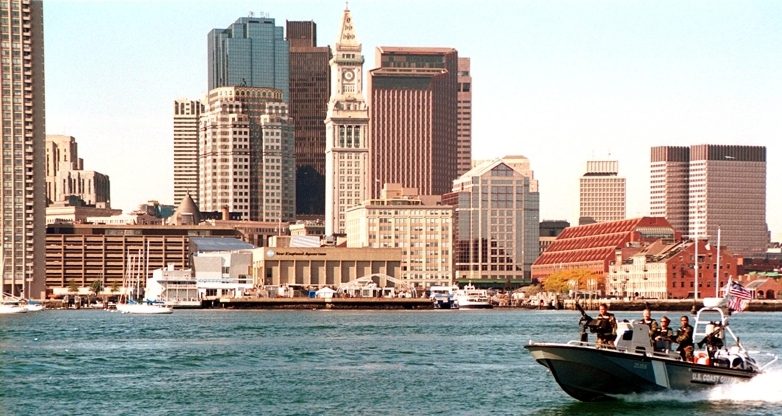


The decade got off to a hectic start for the Coast Guard and Coast Guard Reserve. On January 12, a violent earthquake devastated Port Au Prince, Haiti. Thousands of people lost their live and many more thousands were injured and left homeless. The Coast Guard was first on scene, as the Cutter FORWARD arrived later that day. In the days and weeks that followed, thousands of CG personnel supported the Haiti operation. On January 19, Secretary of Homeland Security Janet Napolitano authorized the activation of 900 reservists to bolster the 500 CG personnel already in Haiti.
While operations continued in Haiti, Deepwater Horizon oil spill disaster sparked the recall of more than 4,000 Coast Guard reservists. The oil spill was the largest environmental response for the Coast Guard since the EXXON VALDEZ spill in the late 1980s in Valdez, Alaska. And, like the Valdez response, reservists played a significant role in the initial response and the long term cleanup effort.
Just two years later Mother Nature would once again flex its muscle wreaking havoc of the East Coast in the form of SUPER-STORM SANDY. SANDY, euphemistically called “Frankenstorm,” made landfall on October 30, 2012, approximately five miles southwest of Atlantic City, N.J. At the time it reached land the storm’s winds extended 1,000 nautical miles from its center. At least 131 deaths were attributed to the storm. Hundreds of CG Reserve personnel would be recalled to assist with response and cleanup operations.
With an eye towards remaining ready to respond, the Coast Guard’s Pacific Area Commander utilized reservists from around the country in a mobilization exercise (MOBEX) to support the America’s Cup 34. The Cup event was held in San Francisco during the months of July and September, 2013. Reservist from every CG District converged on the Bay Area, specifically Station San Francisco on Yerba Buena Island, for two-week rotations in support of the racing events. The value of the MOBEX was best summed up by MK1 Ralph Ricapito, who was mobilized from Station Atlantic City, N.J., as a Boarding Team Member. “At MOBEX 2013, we had the opportunity to perform the mission we train to do.”
Since its establishment during World War II when ninety percent of the 214,000 Coast Guard personnel serving on active duty were reservists, the Coast Guard Reserve has been vital to the Coast Guard's ability to meet surge and contingency operations while simultaneously excelling in steady state missions. The Nation is well served by the reliable and proficient capability the Reserve component provides.span>
In recent times, reservists' commitment to train, augment, and attain competencies coupled with frequent mobilizations at home and abroad has afforded the Coast Guard a highly skilled and adaptable workforce. As the Nation moves forward to meet demands in the Arctic and energy sectors, and tackle emerging threats in Cyber and the Western Hemisphere, this trained Reserve force will continue to be an integral part of the success to fulfill Coast Guard missions for effective maritime governance.
As the Coast Guard Reserve passes the mid-decade point and enters its 76th year, today’s 7,000 reservists stand ready to answer the call: Whether at home or overseas, whether man-made or natural, whatever the reason, wherever the need, the Coast Guard Reserve will be there when needed most.

